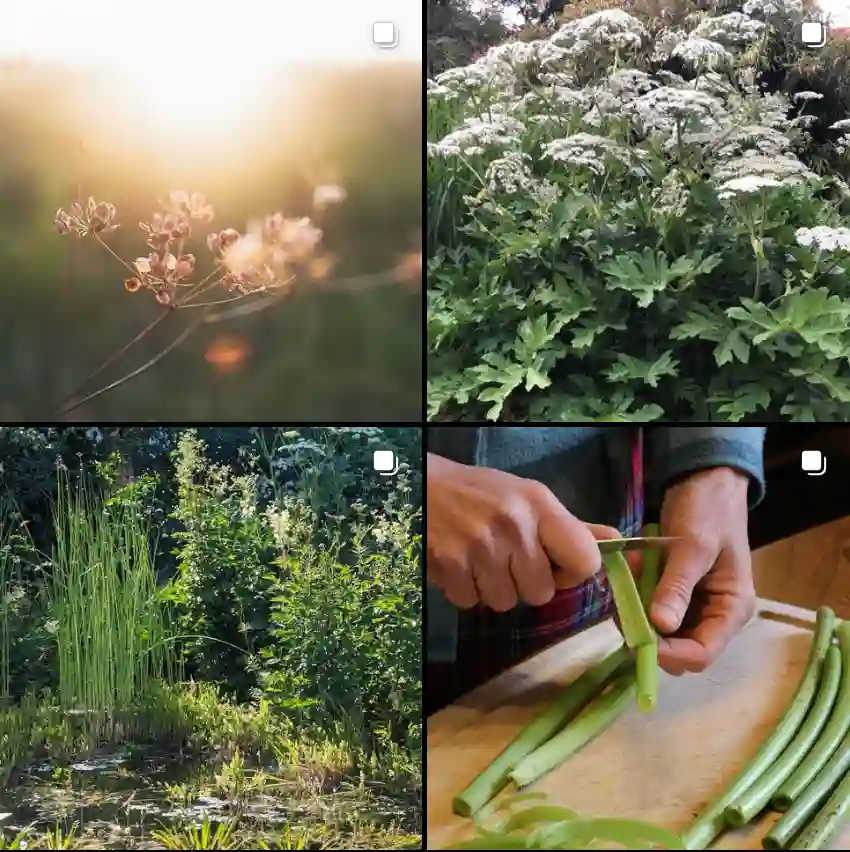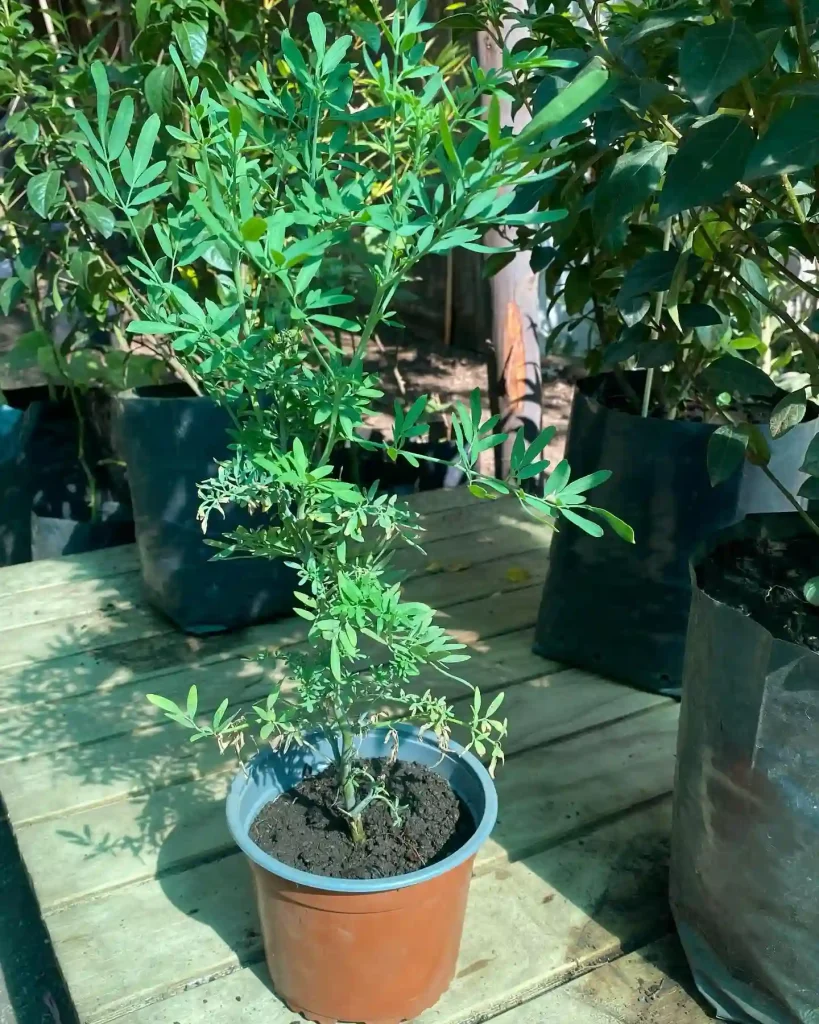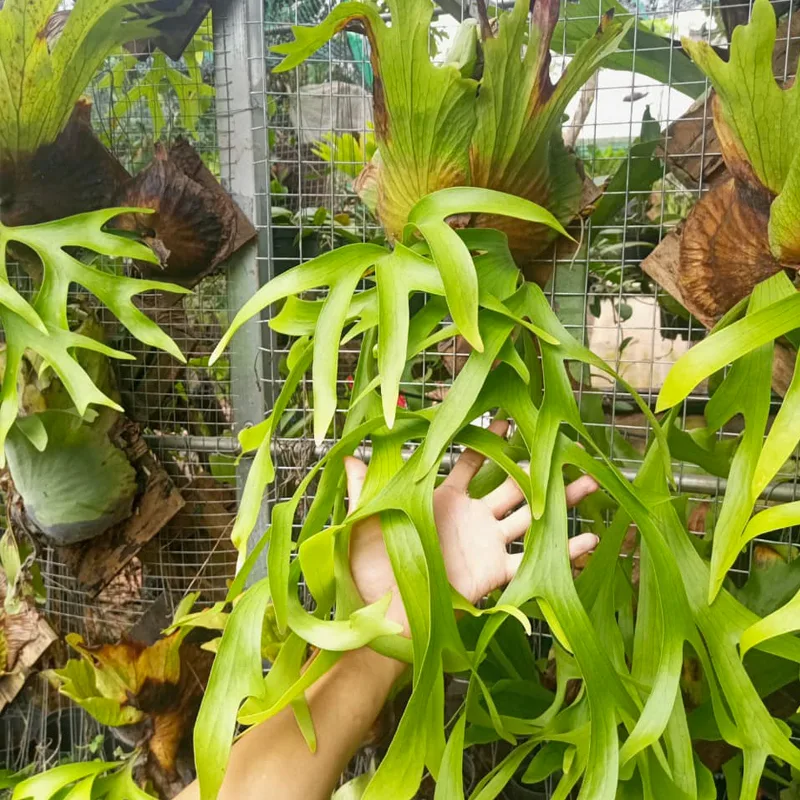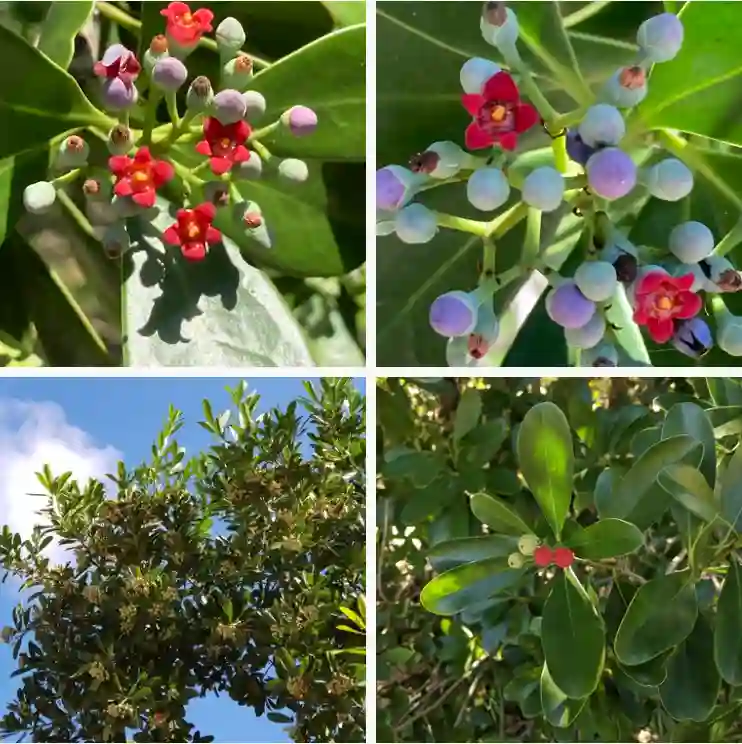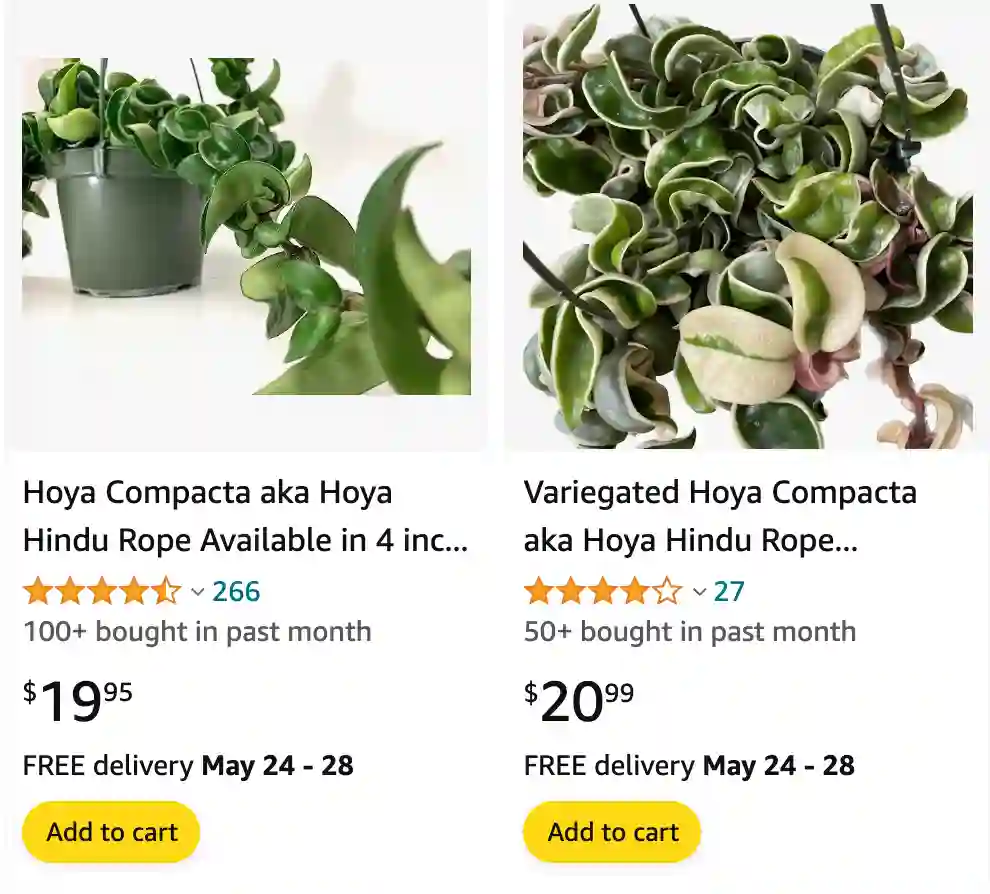
Hoya compacta vs Hindu rope
There isn’t actually a Hoya compacta versus Hindu rope situation! I learned this the hard way. For the longest time, I thought they were two separate plants. Here’s the thing: my beloved Hindu rope plant, with its crazy curly leaves, is actually a Hoya compacta. Hindu rope is just a much cooler, more descriptive nickname.
I think it makes sense though. “Hoya compacta” sounds kind of scientific, while “Hindu rope” perfectly describes those thick, twisted leaves that resemble little ropes. It’s no wonder that’s the name everyone I know uses! Maybe it’s more memorable for the casual plant lover. Now that I know the official name, at least I can impress my plant friends with some trivia!
How to propagate Hoya compacta?
To propagate Hoya compacta, take stem cuttings from a healthy plant. Choose a stem with at least two nodes and several leaves. Cut the stem just below a node, and remove the leaves from the bottom node. Allow the cutting to callous over for a few hours. Plant the cutting in a well-draining mix, such as a mix of perlite and orchid bark, or place it in water. Keep the cutting in bright, indirect light and maintain high humidity. Roots should develop in a few weeks, and once the cutting has a good root system, it can be potted in its permanent container.
How fast does Hoya compacta grow?
Hoya compacta, also known as the Hindu Rope Plant, has a slow to moderate growth rate. Growth can be slow, especially in less-than-ideal conditions. In optimal conditions with bright, indirect light, proper watering, and high humidity, you can expect new growth to appear a few times a year. However, patience is key, as it can take several years for the plant to reach a significant size.
How to care for Hoya compacta?
Here’s a guide to keep your Hoya compacta thriving:
Light:
- Bright, indirect sunlight is ideal. This will encourage healthy growth and potentially lead to blooms.
- Avoid harsh direct sun, especially during the hottest parts of the day, as it can scorch the leaves.
- Lower light can be tolerated, but the plant might grow leggy and produce fewer flowers.
Watering:
- Water deeply when the soil dries out completely. Hoya compacta prefers to dry out between waterings. Overwatering is a major threat, so it’s better to underwater than overwater.
- Sticking your finger into the soil to check moisture is a good practice. If the top inch feels dry, it’s time to water.
Humidity:
- Moderate humidity (around 40-60%) is sufficient. While Hoya compacta tolerates average household humidity, it can thrive with a little extra moisture in the air.
- You can increase humidity by:
- Misting the plant occasionally with lukewarm water (avoiding the flowers)
- Using a pebble tray filled with water (ensure the pot sits above the water level)
- Grouping your Hoya compacta with other humidity-loving plants
Temperature:
- Warm temperatures between 60-80 degrees Fahrenheit (15-27 degrees Celsius) are ideal. Protect your plant from cold drafts and sudden temperature fluctuations.
Soil and Potting:
- A well-draining potting mix is essential. A succulent or cactus mix works well, or you can use a standard potting mix with added perlite or orchid bark for extra drainage.
- Ensure your pot has drainage holes to prevent waterlogging.
Fertilizing:
- Fertilize sparingly during the growing season (spring and summer) only. Apply a balanced liquid fertilizer diluted to half strength once a month or a slow-release fertilizer formulated for houseplants according to package instructions.
- Avoid overfertilizing, as it can damage the roots.
Support and Climbing:
- Hoya compacta is a natural climber. As it matures, providing a moss pole or trellis will encourage climbing growth. You can gently train the vines to climb the support structure.
Additional Tips:
- Wipe the leaves occasionally with a damp cloth to remove dust and improve light absorption. Avoid harsh chemicals or cleaning products.
- Hoya compacta is a relatively slow grower. Don’t be discouraged if it doesn’t put out new leaves frequently. Patience is key!
- Watch out for common houseplant pests like mealybugs and spider mites. Neem oil solution or insecticidal soap can be used for control.
By following these guidelines, you can create a thriving environment for your Hoya compacta and enjoy its beautiful cascading foliage for a long time! Remember, with this plant, underwatering and good drainage are key to preventing root rot.
Why is my Hoya compacta wrinkled?
Wrinkled leaves on a Hoya compacta often indicate underwatering or low humidity. Ensure that you are watering the plant thoroughly when the top inch of soil is dry and maintaining adequate humidity levels, ideally between 40-60%. If the plant is too dry, the leaves will lose turgor pressure and become wrinkled. Inadequate watering can also cause the roots to become damaged, leading to wrinkling leaves.
How often to water Hoya compacta?
Water Hoya compacta when the top 1-2 inches of soil feel dry. This typically means watering every 1-2 weeks, depending on the environmental conditions. During the growing season, the plant may require more frequent watering, while in the winter, you can reduce the frequency. Ensure that the pot has good drainage to prevent waterlogging, which can lead to root rot.
When to repot Hoya compacta?
Repot Hoya compacta every 2-3 years or when it becomes root-bound. The best time to repot is in the spring, just before the growing season starts. Choose a pot that is one size larger than the current one and use a well-draining potting mix. Be gentle with the roots during repotting, and water the plant thoroughly after repotting to help it settle into its new container.
Why is my Hoya compacta turning yellow?
Water Hoya compacta when the top 1-2 inches of soil are dry. This will vary depending on the time of year and the conditions in your home. Generally, this means watering every 1-2 weeks. In the growing season (spring and summer), you might need to water more frequently, while in the dormant period (fall and winter), watering can be less frequent. Always check the soil before watering to avoid overwatering.

